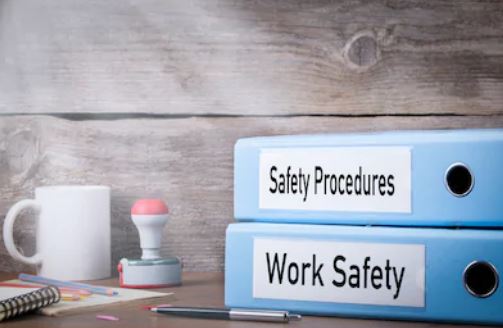Lockout Tagout (LOTO) Regulation for European Region:
EUROPE
- The EU Guidelines 89/655 specify the minimum requirements concerning safety and health while using equipment. Paragraph 2.14 lays down that “every piece of equipment must be fitted with clearly visible devices with which it can be separated from every energy source.
- EN 1037 norm related to the equipment’s safety defines the measures regarding the energy isolation of machinery and the power dissipation to prevent hazardous equipment re-energising. It assures a safe and secure intervention within a risk-prone area.
- European directive CEE 89/655 outlines the minimum regulations for the safety and protection of employees when servicing industrial equipment.
AUSTRIA
- AschG – ArbeitnehmerInnenschutzgesetz – Federal Act on Occupational Health and Safety.
- AM-VO – Arbeitsmittelverordnung (Ordinance on Work Equipment and Tools) – Regulation of the Federal Ministry of Commerce and Labour on protection of employees while using work equipment paragraph 1, §17 (1).
FRANCE
- UTE C18-510 (electrical applications): Lockout of apparatus for service and maintenance to lockout equipment is to carry out the necessary procedures to ensure that the equipment is placed and maintained in a safe position; to prevent its activation and label that the isolated equipment must not be operated. The employer must ensure that all safety procedures are strictly implemented and regularly reviewed by appropriate means. Employees must use all necessary tools to carry out maintenance.
- Décret 2010-1016 refers to the obligations of the employers for temporary or permanent electrical installations usage Labour code (article R4215-10) refers to the identification of the conductors
- Décret 2010-1018 refers to the prevention of electrical risks in work environment, décret 2010-2118 refers to the operations done on electrical installations.
- Labour code (article R 4544-5): the part of the installation on which work (de-ernergised) is done must be identified and locked.Best practice document developed by INRS (Institut National de Recherche et de Sécurité) in November 2011: ED 6109Arrêté of April 26, 2012: Every operation on electrical equipment must follow the new norm NF C 18-510. Article 1 says that this norm is now included into the French Code of Labour.
GERMANY
- The German legislation specifies this requirement in the “Minimum requirements for use of work equipment” (Betriebssicherheitsverordnung Ordinance on Industrial Safety and Health), Annex 1. Work equipment controls must be secured against unintentional or unauthorised actuation.
- According to the “Minimum requirements for the improvement of the safety and health of workers using work equipment” (Betriebssicherheitsverordnung Ordinance on Industrial Safety and Health), Annex 2, modification, maintenance or repair operations can only be carried out when the work equipment is shut down. The work equipment and all its moving parts must be protected against accidental start and movement.
ITALY
- The Italian legislation (Direttiva 2001/45/CE del Parlamento europeo e del Consiglio del 27 giugno 2001 che modifica la direttiva 89/655/CEE) concerns the minimum safety and health requirements for the use of work equipment by workers at work.
SWITZERLAND
- UVG – Federal Law on Accident Insurance.
- VUV – Regulation on the Prevention of Accidents and Occupational Diseases (title 1, chapter 2, paragraph 1, art. 3; title 1, chapter 3, paragraph 2, art. 30, 31 paragraph 3, art. 37; paragraph 4, art. 43)
EKAS Guideline no. 6512 – Work Equipment
These regulations clearly stipulate that during maintenance, adjusting or cleaning of the equipment, it has to be in non-operative state and appropriate devices have to be used to ensure that, for example, a machine is not accidentally switched on.
SPAIN
- The Spanish directive (REAL DECRETO 1215/1997, de 18 de julio por el que se establecen las disposiciones mínimas de seguridad y salud para la utilización por los trabajadores de los equipos de trabajo. BOE nº 188 07-08-1997) states the minimum safety and health for workers’ use of work equipment.
UK Only: BS7671:2008
- In the UK the Provision of Work Equipment Regulations – Regulation 19 – Isolation from Sources of Energy states: “Every employer shall ensure, that where appropriate, work equipment is provided with suitable means to isolate it from all its sources of energy. Every employer shall take appropriate measures to ensure that reconnection of any energy source to work equipment does not expose any person using the equipment to any risk to his health or safety”.
*all excerpts for reference only

